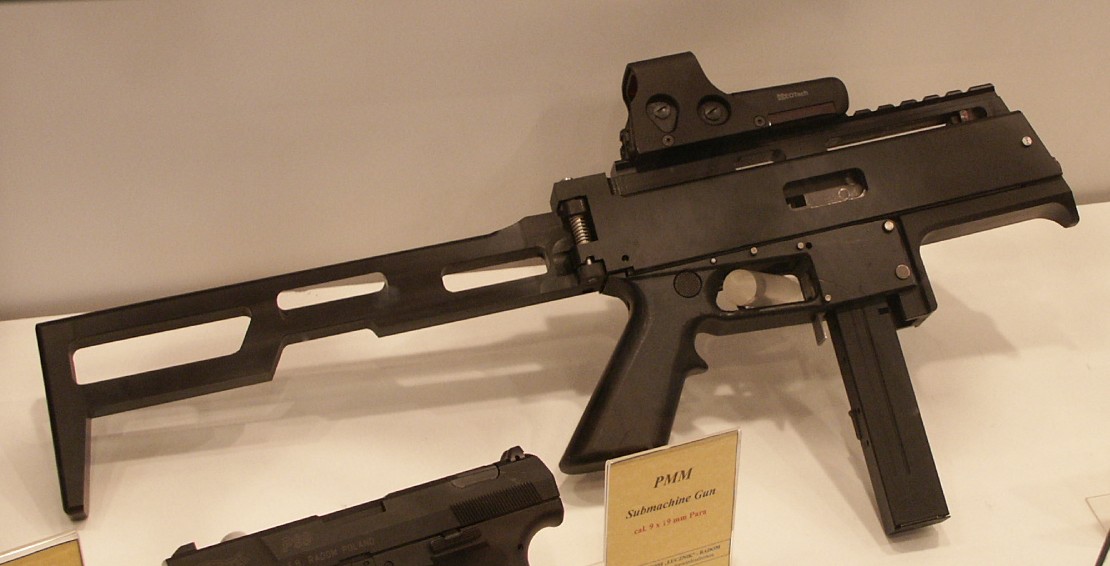
The dividing line between machine pistols and compact submachine guns is difficult to draw. While the term submachine gun usually refers to an automatic firearm larger than a pistol, several weapons are classed in both categories. The 1960s CZ-Scorpion, a Czechoslovak 7.65 mm weapon, for example, is often labeled a submachine gun. However, with its small magazine, it is small enough to be carried in a pistol holster, which suggests that it could be classified as a machine pistol. In the 1980s, weapons such as the MAC-10 and the compact versions of the Uzi series have been placed in both classes. The popularity of submachine guns in recent years has led many weapons previously described as machine pistols to be advertised to as submachine guns, such as the Brugger & Thomet MP9 (formerly known as the Steyr TMP).
The Steyr TMP (Tactical Machine Pistol) is a 9 mm blowback-operated, rotating-barrel weapon that is 282 mm long and that can fire 800-900 rounds per minute; despite its small size and lack of a stock, and the fact that it is called a "Tactical Machine Pistol", it is often classed as a compact submachine gun.[3] Likewise, the German Heckler & Koch MP5K (a weapon small enough to be concealed on one's person or in a briefcase), is also classed as a compact submachine gun.[4]
A machine pistol is typically based on a semi-automatic pistol design. While most machine pistols are designed to be fired with one hand, their light weight, small size, and extremely rapid rates of fire make them difficult to control. To improve accuracy, some machine pistols are fitted with a shoulder stock. Some, such as the Heckler & Koch VP70, will only fire single rounds unless the stock is attached, because there is a safety mechanism incorporated into the stock. The Beretta 93R offers an optional forward handgrip, which is another way of increasing weapon controllability in full automatic mode.

